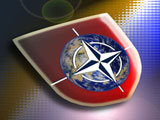NATO looks to Obama
By Daniel Rackowski for ISN
This month marks the anniversaries of the 2001 Bonn Agreement on Afghanistan, as well as the convening of the Constitutional Loya Jirga in 2003. Yet with civilian and military casualties on the rise, there seems to be little cause for celebration at present. While Afghanistan is not yet a failed state, it appears to be failing at an exasperating rate.
As many Europeans and Americans regard this struggle for stability as intimately connected with US President George W Bush’s other, immensely unpopular foreign policy decisions, there are some hopes on both sides of the Atlantic that President-elect Barack Obama may be able to cut the umbilical cord with his predecessor and instill new vigor in the NATO-led ISAF mission.
After all, the NATO engagement, equipped with a sound international law mandate, constitutes a litmus test for the trans-Atlantic alliance as whole, especially as the Taliban and other groups are threatening to further destabilize the entire strategically vital region.
But with NATO having such high hopes in Obama, and the incoming president anticipating more support from the military alliance to curb the violence, is there any congruence in their expectations?
There are some indicators that Obama will address what many US allies have long considered a preoccupation with Iraq at the expense of Afghanistan. His continuing emphasis on the need to re-allocate resources from Baghdad to Kabul indicates that he will deliver.
The planned increase of about 20,000 US troops, among them military and police trainers, is already a step in the right direction, and is likely to be further augmented by at least two combat brigades under the new president.
On the whole, the numbers of US soldiers, currently at about 34,000, nearly could be doubled. In addition to the 30,000 other troops under NATO command and a 70,000-strong Afghan National Army, this constitutes a force capable of at least providing more short-term security.
But what to make of Obama’s numerous requests for additional European soldiers equipped with heavy armor and broad mandates?
A consistent stumbling block on the way to US-EU rapprochement over Afghanistan is of course the cluster of national caveats for most European armies. Arguably, the disagreements today are no longer about the strategies, rather about who will step into the breach.
The predicament for many of the participating countries is of course that, with the Taliban re-gathering, the putative peacekeeping mission they had signed up for quickly turned into full-scale, counterinsurgency warfare. As a result, the already weak support for the mission among electorates keeps dwindling.
While Obama may garner some additional support from some of the 41 states currently participating in the ISAF mission, in others, he will have to try and keep them from abandoning ship altogether.
Canada, for example, has long been a valued asset in the insurgency-stricken Kandahar province. Yet the Canadian government maintains that it will remove its troops from the country by 2011. The overall picture is likely to be one of fluctuation rather than steady supplementation.
So while we may see some cosmetic changes - mainly in the form of goodwill gestures towards the incoming US president - the US should not expect Europeans to significantly expand their fighting forces and instead try to benefit more from their experience in nation-building.
To do so would be a way to tap into the large aid reservoirs of European countries, whose defense budgets in many cases simply cannot carry the weight of a sustained military engagement. Even NATO officials never fail to mention the need for what they term the “comprehensive approach,” meaning that the improvement of the security situation has to go hand-in-hand with other measures, such as infrastructure, economic and social development, good governance and the rule of law if it is to be sustainable.
Winning the lasting support of Afghans also depends on NATO employing the right military tactics. Provincial Reconstruction Teams (PRTs) could be boosted by committing more experts and better equipment, for instance.
While the achievement of a monopoly of force is a paramount objective for stability, it is of equal importance to use such force with prudence and restraint. The rise in collateral damage - especially when resulting in the loss of civilian lives emanating from air bombardments - is a worrying development and evokes memories of the ruthlessness employed by Soviet forces during their occupation.
European countries under the ISAF umbrella could also take the lead in advising, training and equipping Afghan forces. For eventually, the numbers of foreign troops must be gradually reduced and replaced by additional Afghan soldiers who will find greater acceptance among Afghans than any foreign army ever could.
Strategic communications are another battleground for the NATO alliance. Public relations work for both NATO itself, and its mission in Afghanistan, directed at their own publics as well as Afghans, will remain a formidable task, essential for the success of this mission.
The president-elect may just be the right PR person for that job, but he will need to act swiftly in order to capitalize on the current sympathy and before the situation in the country becomes uncontrollable.
